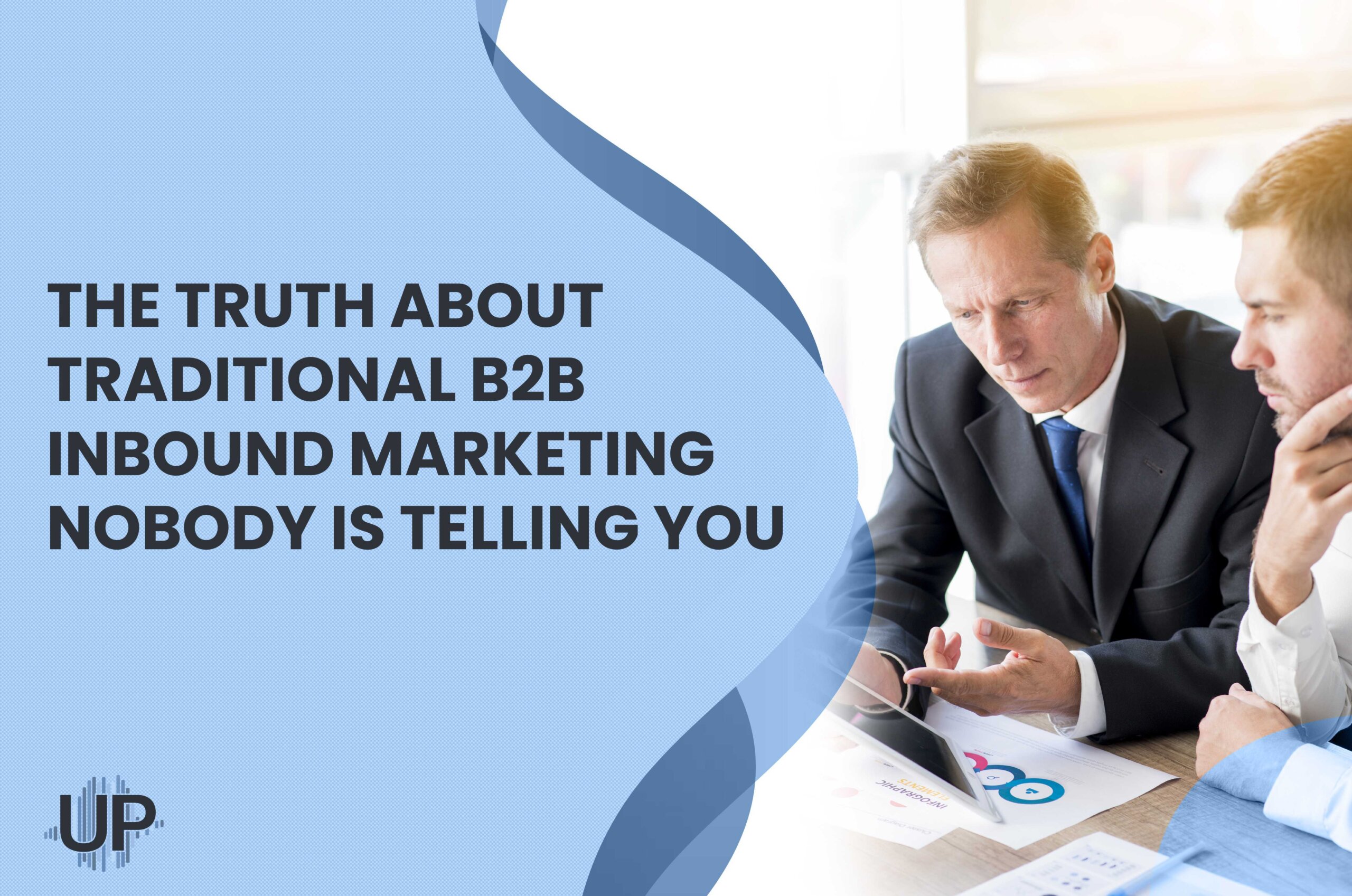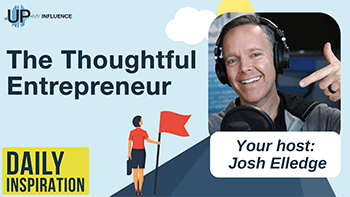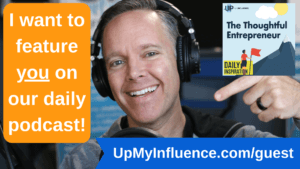
The Truth About Traditional B2B Inbound Marketing Nobody Is Telling You
Inbound marketing became the cornerstone of modern B2B strategies, offering businesses the ability to connect with prospects in a more organic and meaningful way. By focusing on creating valuable, targeted content that attracts customers, inbound marketing helped companies move away from interruptive tactics like cold calls and email blasts. It was a game-changer, allowing businesses to nurture relationships, establish trust, and convert leads over time. Yet, as technology and customer behavior evolve, many businesses continue to follow outdated inbound playbooks, leaving them behind in an increasingly competitive marketplace. This article will take a deeper look at what inbound marketing truly means, why it’s still crucial in 2025, and how the landscape has shifted in recent years. If your business is stuck using outdated strategies, it’s time to update your approach and harness the full power of inbound marketing for today’s market.
What Is B2B Inbound Marketing
B2B inbound marketing is a strategy that focuses on attracting potential business clients through relevant, helpful content and experiences. Instead of pushing products or services onto prospects, inbound marketing aims to draw them in by providing value at every step of their buying journey. This method relies on creating high-quality content—such as blogs, videos, whitepapers, and case studies—that answers the specific challenges and questions of your target audience. By offering useful insights, businesses can build trust and establish themselves as experts, ultimately leading to stronger relationships and higher-quality leads. For example, a software company might publish informative guides on how to improve business operations, positioning themselves as a go-to resource for decision-makers in need of solutions. Unlike traditional outbound tactics, inbound marketing focuses on earning attention through value rather than interrupting the audience with
How B2B Inbound Marketing Works Today
The B2B inbound marketing landscape has evolved significantly, driven by a more complex buyer journey. Modern prospects first become aware of your business through informative, value-driven content that addresses their specific pain points. From there, trust is nurtured through multiple touchpoints—like follow-up emails, customer testimonials, and personalized offers—ensuring that potential clients feel confident in their decision-making process. Unlike the traditional outbound approach, where pressure is used to close deals, today’s inbound marketing thrives on providing value at every stage. For instance, a consultancy might offer a free, downloadable guide on optimizing team performance, which moves prospects from awareness to trust. With decision-making cycles growing longer and involving more key players, B2B marketers now have to create tailored content that speaks to each individual stakeholder. The key to success is adapting to this more intricate journey and ensuring that each touchpoint serves to build deeper trust and, ultimately, conversion.
Inbound vs. Outbound: What’s the Right Mix?
The right mix of inbound and outbound marketing can transform your B2B strategy, blending the best of both worlds. Inbound marketing is all about organic growth, trust-building, and long-term engagement. It focuses on attracting prospects through content that educates and nurtures, like case studies or informative webinars. For instance, a marketing agency might write detailed blog posts to help businesses understand industry trends, gaining trust over time. On the flip side, outbound marketing provides faster results through direct outreach, such as targeted emails or cold calls, delivering immediate visibility and short-term boosts in leads. However, the most successful teams use both inbound and outbound in tandem. Account-Based Marketing (ABM) allows businesses to target high-value accounts directly with personalized outbound messages, while retargeting strategies ensure that inbound content nurtures those prospects until they’re ready to convert. The combination of both strategies ensures that your business attracts, engages, and converts leads efficiently and effectively.
Common B2B Inbound Marketing Techniques (That Still Work if done right)
Despite the rapid evolution of B2B marketing, several traditional inbound techniques still remain effective—if they’re done right. Content creation, for example, continues to be one of the most powerful tools in a marketer’s arsenal. By producing valuable, informative blog posts or whitepapers, businesses can address their prospects' pain points and build trust over time. A SaaS company might write detailed guides or host webinars that provide actionable insights into improving business operations, helping potential customers make informed decisions. Additionally, email marketing, when personalized and strategically timed, remains a proven method for nurturing leads and staying top-of-mind. Social media engagement, especially through LinkedIn, can also be a powerful channel for B2B businesses to connect with decision-makers, share thought leadership, and promote content. While the landscape may have shifted, these inbound techniques still work—provided they are tailored to today’s buyer journey and executed with consistency and value at their core.
Blog content (with strong SEO + intent matching)
Blog content, when optimized with strong SEO and aligned with user intent, remains a cornerstone of B2B inbound marketing. To truly drive value, businesses need to produce blog posts that speak directly to the challenges their target audience is facing, while also ensuring the content is discoverable through search engines. For example, a tech company could publish a blog on “best practices for implementing AI in business operations,” targeting professionals who are actively seeking to understand how AI can solve their business challenges. By incorporating relevant keywords, optimizing headings, and using a clear content structure, the blog ranks higher in search results, attracting leads who are already in the consideration phase. This strategy, known as intent matching, ensures that your content speaks to the exact needs of your audience, ultimately guiding them through the buyer’s journey while improving your search visibility.
Lead magnets and ungated assets
Incorporating lead magnets and ungated assets into a B2B inbound strategy is a proven way to attract and nurture high-quality leads. Lead magnets, such as whitepapers, toolkits, or industry reports, offer immediate value in exchange for contact details, allowing businesses to build their email lists. For example, a financial advisory firm might offer a downloadable toolkit for “Financial Planning for Startups,” which draws in potential clients eager for relevant, actionable content. On the other hand, ungated assets, such as blog posts, podcasts, and free webinars, allow businesses to cast a wider net by offering valuable content without asking for anything in return. These assets help establish authority and create awareness, bringing in visitors who may not yet be ready to make a commitment but are interested in learning more. Together, lead magnets and ungated assets work harmoniously to drive engagement, provide value, and ultimately guide prospects through the decision-making process.
Email marketing (hyper-personalized)
Email marketing, when hyper-personalized, remains one of the most effective B2B inbound marketing techniques. In today’s competitive market, generic email blasts no longer yield the same results. Instead, businesses are focusing on tailoring their emails to the specific needs and behaviors of their recipients. For example, a software company might send a personalized email to a prospect who recently downloaded a guide on “How to Improve Business Operations,” offering them a demo of their product with a note referencing the content they engaged with. This level of personalization makes the recipient feel understood and valued, which fosters stronger relationships and increases the likelihood of conversion. By using data-driven insights, such as past interactions, behavior on the website, or industry-specific challenges, hyper-personalized emails can guide prospects through their journey, providing timely and relevant information that resonates with their individual needs.
Webinars, podcasts, and value-driven social content
Webinars, podcasts, and value-driven social content are all essential tools in the B2B inbound marketing toolkit, especially when designed to educate, engage, and add value to your audience. Webinars allow businesses to dive deeper into topics, offering real-time interaction and answers to specific questions, positioning your brand as an expert in your field. Podcasts, however, are a powerful and increasingly popular way to build a loyal audience by delivering consistent, valuable content that resonates with your target market. For example, a B2B SaaS company could host a weekly podcast series that addresses common challenges faced by their audience, such as improving workflow efficiency or optimizing software integrations. By doing so, they position themselves as a trusted voice in the industry. Value-driven social content, such as insightful posts or thought leadership articles, further supports this effort by expanding your reach and sparking meaningful conversations across platforms. Together, these tactics create a dynamic content ecosystem that nurtures leads and strengthens your brand’s authority. For more on how podcasts can benefit your business, check out this benefits of podcasting article.
The 5 Truths About Traditional Inbound Marketing
There are several hard truths about traditional B2B inbound marketing that most businesses don’t want to admit, and understanding them can help you improve your strategy. Truth 1: Most content is ignored. With an overwhelming amount of content available online, it’s easy for your carefully crafted articles or blogs to get lost in the noise, especially if they don’t provide real, actionable value. Truth 2: Gated content fatigue is real. While offering valuable content in exchange for contact details was once an effective lead generation tactic, today’s buyers are increasingly reluctant to give up their information for content they can easily find elsewhere. Truth 3: Automation often lacks context. While marketing automation tools can help scale efforts, they often fail to account for the nuanced needs of individual prospects, which can make your outreach feel robotic and disconnected. Truth 4: Inbound alone won’t move your funnel. While inbound strategies like content marketing are great for building awareness, they often lack the aggressive push needed to convert leads into paying customers—especially when there’s a longer sales cycle. Truth 5: SEO ≠ pipeline. High search rankings might get you traffic, but unless that traffic is effectively nurtured, it doesn’t necessarily translate into sales-ready leads. Recognizing these truths can guide your inbound marketing efforts and help you build a more effective strategy that combines both inbound and outbound approaches.
What’s Changed in B2B Buyer Behavior?
B2B buyer behavior has undergone a significant transformation in recent years, and traditional inbound marketing methods are struggling to keep up. Today’s buyers are more informed and self-reliant than ever before, often conducting extensive research online before even considering engagement with a sales team. For example, a decision-maker at a mid-sized company might start by reading blog posts, watching webinars, or checking product reviews to assess potential solutions to their challenges—long before they’re ready to speak with a sales rep. This shift means that buyers now expect highly personalized, relevant content at every stage of their journey. They’re also seeking a seamless, frictionless experience, where information is readily available without requiring multiple steps like form submissions or gated content. As a result, the old approach of casting a wide net with general content and relying on gated resources for lead generation is no longer as effective. To truly connect with modern buyers, businesses must be more agile, offering content that addresses specific pain points in real-time.
What Modern Inbound Marketing Should Look Like
Modern inbound marketing needs to go beyond the traditional tactics of the past and embrace a more holistic, buyer-centric approach. Today’s B2B buyers are looking for a personalized, seamless experience that guides them through their journey without unnecessary barriers. Instead of relying solely on gated content or static blog posts, businesses should focus on creating interactive, dynamic content that meets the unique needs of their audience. For instance, a marketing agency might offer free online tools, like a content performance calculator, that help prospects assess their current strategies while subtly introducing the agency’s services. Furthermore, integrating inbound with a multi-channel strategy, including podcasts, webinars, and social media, ensures that your business can connect with prospects across various touchpoints. This approach should also leverage data and automation to deliver the right content at the right time, ensuring that prospects receive a tailored experience that speaks to their specific interests and pain points. Modern inbound marketing isn’t just about attracting traffic—it’s about creating meaningful interactions that nurture relationships and convert leads into long-term customers.
Conclusion
To wrap up, the truth about traditional B2B inbound marketing is that while it was once revolutionary, the needs and behaviors of today’s buyers have evolved. In a world that’s increasingly digital and fast-paced, relying solely on old tactics like gated content or static blog posts simply isn’t enough. Modern B2B marketing requires a more adaptive approach that blends personalization, multichannel engagement, and value-driven content to nurture relationships throughout the buyer’s journey. From leveraging podcasts and social media to implementing hyper-targeted email campaigns, it’s clear that the future of inbound marketing lies in delivering relevant, timely content in a way that aligns with the needs and preferences of your audience. By embracing these changes and refining your inbound strategy, your business can remain competitive and effectively connect with today’s more informed and discerning buyers.
Frequently Asked Questions
As you reflect on the evolving landscape of B2B inbound marketing, you may have several pressing questions. What’s the biggest mistake B2B companies make with inbound marketing? As businesses adjust their strategies, understanding common pitfalls can help avoid costly missteps. Another question on many minds is, what’s the difference between traditional and modern inbound marketing? This distinction is crucial for adapting to today’s more sophisticated buyer behaviors. You may also be wondering, should we still gate content like eBooks and whitepapers, or has that tactic become obsolete in today’s environment? Finally, a common concern is whether outbound efforts are still necessary if inbound marketing is executed well. These are all important questions that reveal the complexity of modern inbound marketing strategies and the need for businesses to continually evolve.
What’s the biggest mistake B2B companies make with inbound marketing?
One of the biggest mistakes B2B companies make with inbound marketing is neglecting the personalization aspect. In the past, businesses could rely on one-size-fits-all content to attract leads, but in today’s marketplace, buyers expect more tailored, relevant experiences. For example, a B2B marketing agency might create a blog post that broadly covers SEO strategies, but without honing in on the unique needs of specific industries or buyer personas, the content may fall flat. Personalized content that speaks to the individual challenges of specific segments is what truly builds trust and converts leads into loyal customers. The key is to understand your audience’s pain points and provide them with highly relevant, timely content that feels custom-built for their needs, rather than relying on generic, broad-reaching materials.
What’s the difference between traditional and modern inbound marketing?
The key difference between traditional and modern inbound marketing lies in how businesses engage with their audience. Traditional inbound marketing was largely centered on creating static, one-size-fits-all content and hoping it reached the right audience. For example, companies would produce generic blog posts or eBooks, often behind gated forms, and rely on SEO to drive traffic. Modern inbound marketing, however, is far more dynamic and personalized. It integrates multiple touchpoints such as podcasts, social media, and video content, offering prospects a more engaging experience across channels. Rather than just driving traffic, today’s inbound focuses on creating personalized journeys for leads, providing tailored content that aligns with their specific needs at every stage. For instance, a company offering cloud solutions might segment their audience by industry and deliver personalized webinars, case studies, or videos to address the unique challenges of each sector. This shift from broad outreach to highly targeted, multi-channel engagement is what sets modern inbound apart from its traditional counterpart.
Should we still gate content like eBooks and whitepapers?
The decision to gate content like eBooks and whitepapers is not as clear-cut as it once was, and it ultimately depends on your audience’s expectations and your lead-generation strategy. While gated content can still be effective for collecting leads, especially in highly niche industries, it’s important to recognize that today’s buyers are increasingly cautious about sharing their personal information. For instance, a potential client may be willing to download a whitepaper on a specialized topic, but if they’re asked for too much information upfront, they may abandon the process altogether. In response, many businesses are moving toward ungated content, offering valuable resources freely to build trust and credibility with their audience. This doesn’t mean that gating content is obsolete; instead, businesses should consider offering a mix—some content can be gated to attract high-quality leads, while other content can be ungated to foster trust and expand reach. Balancing these approaches based on buyer behavior is key to a modern, effective inbound strategy.
Do we need outbound if we’re doing inbound well?
Even with an effective inbound strategy, incorporating outbound marketing can still provide valuable results. Inbound marketing excels at attracting, engaging, and nurturing leads over time, but outbound tactics allow businesses to proactively target high-potential prospects who may not yet be aware of your brand. For instance, if you’ve built a strong content library and have a steady stream of inbound leads, outbound efforts like personalized cold calls or direct mail can complement these efforts by reaching out to key decision-makers directly. By aligning your outbound tactics with your inbound content strategy—such as using targeted messaging based on the insights gathered from your inbound activities—you can accelerate the sales process and fill the pipeline with highly qualified leads. Combining both strategies allows you to strike a balance between long-term engagement and immediate sales opportunities, ensuring a comprehensive approach to growing your business.


